An Interview with Dan Gookin
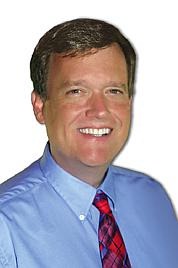
Dan Gookin
Picture courtesy Dan Gookin
Dan Gookin is a popular computer book author who has written 120 titles that have sold 12 million copies and been translated into over 30 languages. He is perhaps most famous for DOS for Dummies, his 1991 book which became the fastest selling computer book and launched the For Dummies series that continues today. He also maintains the web site Wambooli.
In this interview, conducted in August 2011, he talks about how he started in computers with a TRS-80 Model III.
Q: Tell a little bit about yourself. How did you get started with computers and the TRS-80?
A: It was by accident. I really wanted an Apple II. My friends had Apple II’s. But the guy in the computer store was a jerk, so I went to Radio Shack. They were nicer, and I walked out with a Model III, 4K, bare bones system. Over about two years I worked my butt off, bought every upgrade I could for the thing. My purpose was to make it a word processor to start my writing career. Not wanting to be one to waste an investment, I learned how to program, first in BASIC and then in Z80 Assembly. I took to the computer and programming immediately. It was very natural for me and I spent hours and nights learning to code anything and everything.
Eventually I bought a 4P, which I dearly loved. I upgraded it with an amber monitor. It was one sexy beast. I miss that system more than I miss the Model III.
The looming issue of the date limitation in TRSDOS forced me into the IBM camp, however. Also, as someone who had a modicum of insider knowledge at Tandy, I was aware that the TRS-80 line was doomed.
Q: You wrote DOS For Dummies, the famous book that started the “For Dummies” series. Did your experiences with the TRS-80 help with your writing career?
A: In a way, yes. My first career job was working at CompuSoft Publishing. They published the first Learning BASIC book for the Model I and were tied in with Tandy. I worked on several titles there, and all the computers in the office were Model IIIs. The network was run off a Model 16 with Tandy terminals everywhere. I was the Network God, as well, running Unix commands (actually Xenix — remember that?) to backup and maintain the system.
CompuSoft had a unique writing style. Short, punchy, laden with humor. It was also supposed to be for the beginner, and if you remember the Learning BASIC book for the Model I, it was kind of similar to the For Dummies titles. The major difference was that the CompuSoft stuff was tutorial in nature. Also, the humor I used in For Dummies was far more obnoxious than anything CompuSoft would allow.
Doing a radio call-in show on computers also helped me get to know what the users were having trouble with. I did that for a few years, plus I edited a computer magazine in San Diego, The Byte Buyer and later ComputorEdge. That magazine was geared toward first-time buyers, so we had lots of beginner tutorials and information.
Going back to my Model III, however, I remembered all my initial frustrations. In fact, I distinctly remember being uncomfortable at just turning the machine off. I didn’t think that was right, and really hesitated the first few times I did it. There was nothing in the TRS-80 manual about turning off a computer, so I made sure that I wrote about that topic in DOS For Dummies.
Q: Do you have any memorable experiences or stories to share about working with Sam Solomon and CompuSoft Publishing?
A: I used SuperScripsit at home, which Solomon wrote. At CompuSoft we used Scripsit, and I think he might have written that one as well. For the most part, I don’t recall much about the episode where we worked with Mr. Solomon, and I never actually met him. (Though I was the “Technical Director” at CompuSoft, only the big wigs flew to Fort Worth to meet with Tandy and Solomon.)
Tandy would send us beta stuff all the time. We were the first to have the Model 1000, as well as the Model 2000 and others.
I once had a beta version of Tandy’s original 1200 baud modem. It was hot. Literally. The thing would shut off after being online for even two minutes. The modem was a prototype, so it didn’t have a case: it was basically a circuit board. So I solved the heating problem by putting a bag of ice right on the circuit board. That worked, surprisingly.
Anyway, back to Sam: CompuSoft was going to do the documentation for his latest word processor, Scripsit Pro. It was a sweet word processor, with lots of features that rivaled anything IBM or Apple had at the time. The guy was a genius.
During my stint at CompuSoft I coded a tiny program I dubbed RESCUE. It solved a problem folks had with the damn orange reset button right on the Model III’s keyboard. People would accidentally punch it all the time. I used Commander 80 to scour memory and discovered that even though the system was reset, memory was still intact. You could find the exact address where a document was previously stored in memory and save that document back to disk, rescuing it from a reset.
I presented the code to Sam for inclusion with the Scripsit Pro disk. It’s the only commercial software I’ve ever written.
Here’s a secret: There was special code inside RESCUE that would check the date. Every year on my birthday, RESCUE would play music while it recovered your document. Sam found that code right away, because my RESCUE program called the TRSDOS date routine, and he found that odd. So I ended up pulling out that special code.
Alas, Scripsit Pro was way too late for the market. It was a TRSDOS program and TRSDOS was on life support. I think Sam might have ported it to the PC, but the competition there was steep. I had already started using WordPerfect on my IBM PC at home by then.
Q: You have said that you used to recommend BASIC to new programmers but that you can no longer recommend “modern” BASIC. Why did you change your opinion, and was TRS-80 BASIC the type of BASIC you used to recommend?
A: TRS-80 BASIC was a version of Microsoft Basic. In fact, there was a Microsoft-TRSDOS relationship as well, though I forget what it was. Wasn’t there a trick where you could get TRSDOS to produce the text “Copyright Microsoft” or something? Maybe I’m just getting old and confused…
I bought the IBM PC model 5150 that CompuSoft used to write Learning IBM BASIC — which was a rollover of the original Model I Learning BASIC book. The BASIC was pretty much the same, aside from a few custom words. I also worked on The BASIC Handbook at CompuSoft, which was a comprehensive documentation of all the BASIC languages in the world. So I was pretty well-versed in BASIC.
The problem with BASIC was that it got updated with Visual BASIC and other hybrids back in the late 1980s early 1990s. It was becoming a bastard language with really no core or no community behind it. It lacked a lot of the simple feedback mechanism that was used to teach BASIC in the CompuSoft books. E.g. it was near impossible to demonstrate how a keyword works without writing at least 30 lines of code. That’s boring and a turn-off.
Q: Do you think older computers such as the TRS-80 can teach us anything about computers and programming today?
A: Well, knowing about the original TRS-80 can teach people about computer science, but computers today are all about making things easy and simple and placing foof over the core of the computer. People who enjoy messing around with text interfaces can learn a lot more about computers than someone who thinks that they’re a computer wiz because of the mouse.
As far a programming goes, the TRS-80 was a poor teacher. It was a single-tasking system that relied upon a lot of static addresses to get things done. I remember there was one address you could read that always contained a random value, which you could use for writing games and programs that needed a random number seed. Writing code that relies on such things doesn’t teach strong programming skills. It took me quite a while to break that mold.
Q: Do you have any other stories to share about your TRS-80 experiences?
A: Sure. Tons.
It only took me 6 months before I voided my warranty. I wanted an RS-232 card for the Model III and Radio Shack was selling it for like $120. I saw an ad for one a lot cheaper in an issue of 80 Micro. I remember breaking that seal and opening my Model III. I was terrified! It was such a huge investment. But I deftly installed the RS-232 card and used it to get online back in 1982.
The local Radio Shack repair place was terrible. The guy who “fixed” the machines was a smoker, big time. When we got the machines back at CompuSoft, we’d turn them on and cigarette smoke would come wafting up through the vents.
Another upgrade I did to the Model III was to get it an Amber monitor and ditch that damn B&W TV Tube. It was a terrifying upgrade, even worse than the RS-232. That’s because of all the high voltage associated with the monitor. I took my time and eventually it worked — Sort of. The Model III didn’t really have enough power to push the amber CRT, so it would fade out and restart from time to time. Because I voided my warranty, the Radio Shack repair place would charge me a fortune to fix it. That’s when I found out about a local TRS-80 repair guy called TRS-Doc. (That was in San Diego.) I took in the Model III and he snipped one resistor on the motherboard. Problem fixed. He didn’t even charge me. He did get more business because of that, since I used him from then on for CompuSoft’s repair needs and I told all my TRS-80 friends about him.
I also upgraded the Model 4P with an Amber monitor, as I wrote earlier.
I enjoyed programming on the TRS-80. I’ve yet to find a debugger as sweet as Commander 80. It really helped me learn how the Z80 worked, internally and with memory. That was a godsend. I wrote lots of little programs, but my magnum opus was a program I called Communications Major. It was a communications toolkit that contained a programming language that let you program the modem. You could use it as a telecom program and dial up services, or it could answer the modem and work like a BBS. I coded it all in assembly language. It would even take advantage of the 128K available on the 4 and 4P as a storage buffer. Lamentably, I stopped working on it when I knew that Radio Shack would no longer be supporting the TRS-80 line.
Q: What have you been doing since your days of working with your Model III?
A: Well, a lot. I still program, but mostly as a hobby. I’ve written my own utilities, but nothing worth putting up on SourceForge. I don’t think I have anything left from the TRS-80 days, other than a copy of The Source, which was the source code documentation for TRSDOS. (I used that to help me write Communications Major.)
From CompuSoft I went independent and starting writing my own computer books. That proved successful. I still love to program, and do so primarily on the Mac in the terminal (command line). I do web page programming, C. I’m learning Java now. Once upon a time I knew Perl pretty well. But mostly I write. Now the hot topic is books on smartphones.
I came this close to buying a Model 4P on eBay a while back. It came with software and such and they said that it worked fine. I’ve bought lots of old computers on eBay and they generally don’t work, so I didn’t get the 4P. I do have a TRSDOS emulator that runs on my Macintosh. It’s always fun for me to fire that up and see the “Ready” prompt on the screen. That really brings back some memories.
My thanks to Dan Gookin for his participation in this interview.
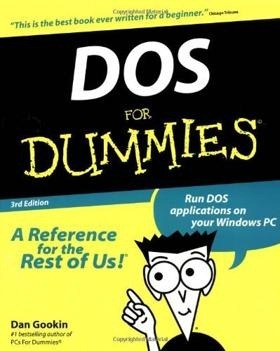
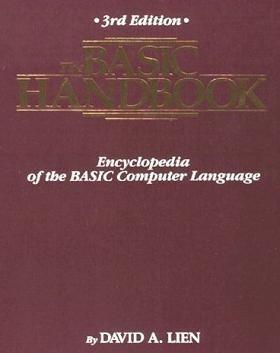
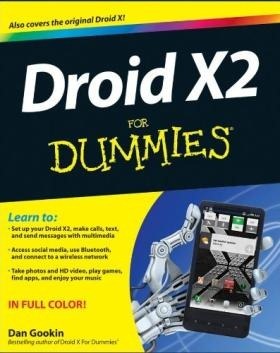

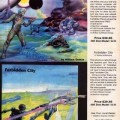

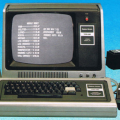










Mac McCarthy says:
Great stories, Dan! You really know how to talk to beginning users, in ways that help without being patronizing or baby talk, but treating your readers like intelligent adults who happen not to be knowledgeable about this particular area. Perfect!
I knew we had the right guy to write DOS for Dummies when you gave that speech at the writer’s conference complaining about publishers' creativity wringer that would squeeze the creativity out of your writing! How true. How glad I am we were able to leave all your creativity in. In that first book, anyway…
mac
Jim Bentz says:
Great interview — just the questions I would have asked! I used to be big into TRS-80s back in the day and I love to go through this web site reliving the old days. I’m especially enjoying the interviews. Thanks for this site and its “blast from the past”!
Charles W. says:
I never knew there was a connection between DOS FOR DUMMIES and my old TRS80. It just goes to show that the old TRS80 people really had a long lasting impact on the computer industry. I got my (computing) start on a 4K Model 3 as well and while I haven’t gone on to quite Dan’s level of success I think I’ve done pretty well. You’re doing a great service Matthew preserving all this information in one place.
Pascale Vengau says:
I discovered your emulator last week and have been having the greatest time “reliving” my TRS-80 days from 30+ years ago. The articles and interviews on your site are great. Keep up the good work!
David Sutherland says:
re: " Wasn’t there a trick where you could get TRSDOS to produce the text “Copyright Microsoft” or something? Maybe I’m just getting old and confused…" — was that the TRSDOS 1.3 BASIC command:
CMD “&"&
?